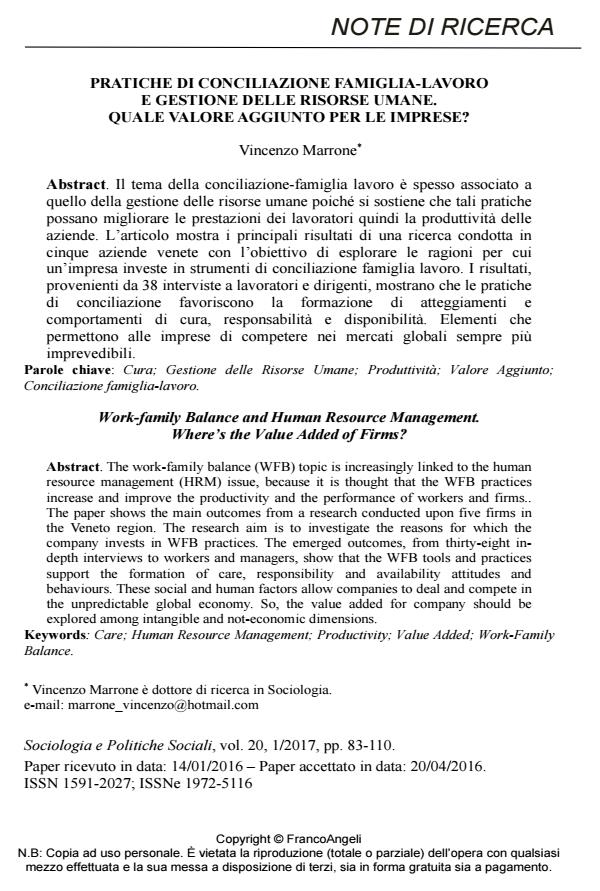Work-family Balance and Human Resource Management. Where’s the Value Added of Firms?
Journal title SOCIOLOGIA E POLITICHE SOCIALI
Author/s Vincenzo Marrone
Publishing Year 2017 Issue 2017/1
Language Italian Pages 28 P. 83-110 File size 311 KB
DOI 10.3280/SP2017-001005
DOI is like a bar code for intellectual property: to have more infomation
click here
Below, you can see the article first page
If you want to buy this article in PDF format, you can do it, following the instructions to buy download credits

FrancoAngeli is member of Publishers International Linking Association, Inc (PILA), a not-for-profit association which run the CrossRef service enabling links to and from online scholarly content.
The work-family balance (WFB) topic is increasingly linked to the human resource management (HRM) issue, because it is thought that the WFB practices increase and improve the productivity and the performance of workers and firms.. The paper shows the main outcomes from a research conducted upon five firms in the Veneto region. The research aim is to investigate the reasons for which the company invests in WFB practices. The emerged outcomes, from thirty-eight in-depth interviews to workers and managers, show that the WFB tools and practices support the formation of care, responsibility and availability attitudes and behaviours. These social and human factors allow companies to deal and compete in the unpredictable global economy. So, the value added for company should be explored among intangible and not-economic dimensions.
Keywords: Care; Human Resource Management; Productivity; Value Added; Work-Family Balance
Vincenzo Marrone, Pratiche di conciliazione famiglia-lavoro e gestione delle risorse umane. Quale valore aggiunto per le imprese? in "SOCIOLOGIA E POLITICHE SOCIALI" 1/2017, pp 83-110, DOI: 10.3280/SP2017-001005